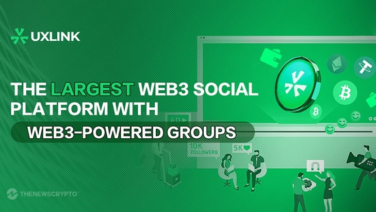Marketing and advertising underpin billions of dollars of company budgets each year. On average, a business will spend 12% of its total revenue each year, using this money to create content, PPC ads, and spread the word about its products and services across the globe. From traditional print media to digital ads, we see the product of these investments every single day of our lives.
Yet, while Web2 is now completely consumed with advertisements wherever you look, the same cannot be said for Web3. Web3, while active in terms of users, has a tiny quantity of active ads compared to Web2. In fact, many platforms do not accept ads in the slightest. That said, with the growing popularity of Web3, it’s only a matter of time before marketing and advertising arrive in this space.
In this article, we’ll dive into the world of Web3 advertising, demonstrating how it’s coming into fashion – but not how we would expect it to. We’ll also dive into advertising commitments that leading companies like Banksters have made, showing the high-quality due diligence and vetting system they have in place for Web3 ads.
Common Streams of Advertising in Web2
Web2 is an iteration of the internet that has been dominated by tech companies. Everywhere we look, Facebook, Apple, Google, and other leading companies publish ads and control the ads we see. Facebook makes over $114 billion from ads each year, dispersing them across Instagram and Facebook for billions of users to see.
There are a number of common streams of advertising that we see in Web2:
- Billboards
- Influencer and collab markets
- Online advertising
Yet, Web3 has comparatively few ads in its active space, with advertising struggling to break into this sphere. If not from a lack of investment, what’s preventing Web3 from being overrun with typical Web2-esque advertisements?
How Trust Is the Core of Ads in Web3
In many regards, the fact that advertising in the Web3 industry is still fairly underdeveloped does lead to much higher customer satisfaction. Without ads bombarding every movement that users make, they’re able to concentrate on the specific product or service rather than having additional ads to battle through.
However, the advertising industry has not entered the Web3 industry due to a lack of access. On the contrary, in-game play2earn billboards, empowered Web3 influencers, and PPC ads that reward the user would all perform fantastically in these spaces. Beyond this, because Web3 is decentralized, there is a much larger balance of trust between audiences and platforms.
Community is at the very center of the Web3 experience. As users benefit from participating in Web3 projects, with more ownership opportunities on each service and platform, there is always an incentive to get involved. Equally, the leading governance structure of the Web3 world is DAO – decentralized autonomous organizations – which reward users with the ability to actively vote to shape and change the evolutionary pathways of projects.
With the high degree of community engagement, Web3 brands are not like Web2 tech giants that simply do not care about their users. Advertisements on Web3 are much rarer to see because each developer needs to carefully audit the company they are going to promote.
If they end up promoting a project or platform that takes advantage of their customers, they, too, are impacted by their lack of due diligence. This need to double and triple check any advertisements before they can access Web3 ecosystems is actually immensely beneficial:
- Fewer Ads – Without the need to flood the space with advertisements, users can traverse through the Web3 platforms and systems that they use without being overwhelmed with popups, billboard advertisements, and endless scam-like ads.
- Higher Quality Ads – Currently, anyone can create a Facebook Business account and launch an advert recommending absolutely anything they like, within reason. This flexibility has led to the ongoing decrease in the average quality of ads, Web3 will spend more time vetting each advertisement, ensuring all are high-quality for consumers.
- Safer Online Ecosystem – With a lack of duplicitous ads or ads that are unrepresentative of the true product they offer, consumers in Web3 will have a much safer system for finding new products, services, and systems.
Banksters is a phenomenal example of a Web3 company that has fully embraced advertisements, offering recommendations and suggestions to their users. However, instead of recommending any company that pays for the real estate space, they deeply comb through each advertisement and connected company to determine its validity.
Fostering a system where great products only recommend other effective, commendable projects creates a much healthier overall ecosystem. While the world of advertising in Web3 may look a little different from its Web2 counterpart, it will be safer, more secure, and offer higher-quality ads to users.
Final Thoughts
In many ways, the principles of trust, certainty, and community that underpin Web3 set it apart incomparably from Web2. Web2 has now evolved to a point where advertising runs the space, with over $73 billion spent in the sector each year. While Web3 has an equal potential to expand into the advertising market, it will stay aligned with its core principles as it does.
With brands like Banksters leading the charge, we are already seeing Web3 advertising and marketing in a completely different light. If other companies in this space continue to align with the core principles of blockchain and follow in Bankster’s footsteps, we’ll see a much healthier online space for consumers in this new iteration of the internet.






